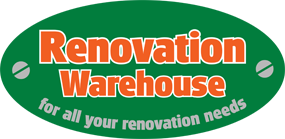Asbestos was commonly used in building materials in New Zealand until the late 1980s. If you're renovating an older home, you might encounter asbestos, which poses serious health risks if disturbed. Here’s a comprehensive guide on how to handle and remove asbestos safely.
Identifying Asbestos
- Know the Common Materials: Asbestos was used in a variety of products, including roofing, cladding, insulation, flooring, and cement sheets / Fibrolite / Fibrolyte.
- Look for Warning Signs: Crumbling, powdery materials, or those in poor condition may contain asbestos.
- Get a Professional Inspection: Engage a licensed asbestos assessor to take samples and confirm the presence of asbestos.
Testing for Asbestos
- Engage a Professional: Always hire a licensed asbestos assessor to test for asbestos. They will safely collect samples and have them analysed in a laboratory.
- DIY Testing (Not Recommended): If you must test it yourself, wear protective gear, dampen the material to minimize dust, carefully collect a small sample, and send it to a lab for analysis.
Safe Handling of Asbestos
- Wear Protective Gear: Use disposable coveralls, gloves, and a P2 respirator mask.
- Minimize Dust: Wet down the asbestos-containing material (ACM) to prevent dust from becoming airborne.
- Do Not Break It Up: Handle ACM gently to avoid breaking it and releasing fibres.
Removing Asbestos
- Check Regulations: Familiarize yourself with local regulations regarding asbestos removal.
- Hire Professionals: For large-scale or high-risk removal, always hire licensed asbestos removers.
- DIY Removal:
- Prepare the Area: Seal off the work area with plastic sheeting and tape.
- Wet the ACM: Keep the material wet to prevent dust.
- Remove Gently: Carefully remove the ACM, keeping it intact as much as possible.
- Seal Waste: Place asbestos waste in double-layered, heavy-duty plastic bags and seal them.
Disposal of Asbestos
- Use Approved Facilities: Asbestos waste must be disposed of at approved facilities.
- Transport Safely: Ensure the waste is securely sealed and labelled before transporting.
- Follow Local Guidelines: Adhere to local council regulations for the disposal of hazardous materials.
Additional Tips
- Don’t Use Power Tools: Avoid using power tools on ACMs as they can release asbestos fibres.
- Clean Up Thoroughly: Use a wet cloth to clean surfaces and dispose of it with asbestos waste.
- Decontaminate Properly: After removal, thoroughly wash yourself and your clothing.
Health and Safety Precautions
- Avoid Eating and Drinking: Don’t eat or drink in the work area to prevent ingestion of asbestos fibres.
- Regular Health Checks: If you handle asbestos regularly, have routine health checks to monitor for asbestos-related diseases.
Legal and Professional Advice
Always stay informed about the latest safety standards and regulations. Consulting with professionals and local authorities ensures that you comply with legal requirements and maintain safety.
Handling asbestos is a serious task that requires strict adherence to safety protocols. By following these guidelines, you can minimize the risks and protect yourself and others from the dangers of asbestos exposure.
For more information and professional advice, consult with licensed asbestos removal experts and refer to New Zealand’s WorkSafe guidelines on asbestos management.

